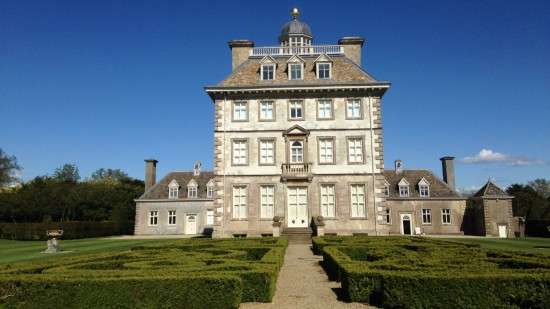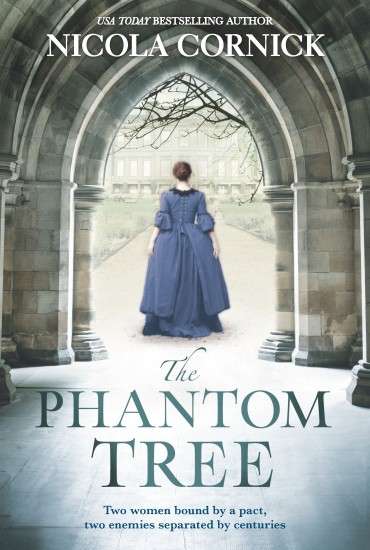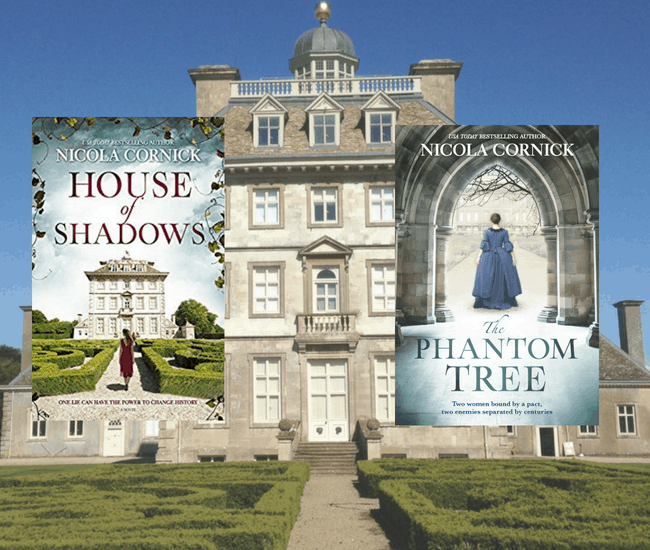The life of a writer can be a strange business. Frequently people assume it’s a glamorous job; they imagine a world of book launches and literary parties with a few words thrown down on paper in between. It can be seen as arcane and exciting and if you tell people it is 90 percent solitary, spent at your computer, dressed in pajamas or your dog-walking clothes, they nod and smile and don’t believe you. I didn’t believe it myself until I gave up my job as a university administrator to be a full-time author, fifteen years ago. The first three silent months were absolute bliss. Then I started to feel lonely.
That was the moment when I realized that I needed to combine writing historical fiction with something else, something that brought me into contact with people. It was a happy co-incidence that the National Trust was advertising for guides to show visitors around Ashdown House, a 17th century mansion situated just down the road from me. It’s a stunning house with a fascinating history and I was soon immersed in researching it and finding out more about the Craven family who had owned the property for 350 years.

Since I started working at Ashdown I’ve had the most fascinating experiences, from being invited to view private portrait collections containing 17th century masterpieces to giving talks to history societies and literary festivals. When a TV company was interested in making a program about renovating a property on the estate I acted as a consultant, providing information on the industrial history of the building, which have been a tile factory in the 19th century. It was fascinating! Nothing makes me happier than sharing my passion for history with people and the visitors we have at Ashdown House, who so often bring stories of their own. Some people have family who worked there, or are connected to the Craven family, or remembered some anecdote about the history of the property. I help with genealogy inquiries from all over the world. I also get to help out on archaeological projects so when the house went through a huge renovation project in 2011 I helped to trace the history of some of the artifacts found, from a set of the First Earl of Craven’s spurs to a piece of Victorian wallpaper! Each trace of history tells a story of the past.
 My first dual-time novel, House of Shadows (Graydon House Books), told the story of Ashdown House and it gave me a taste for researching the history of my local area. That was when I moved on to writing The Phantom Tree (Graydon House Books), which is also set locally to me in the county of Wiltshire. The Phantom Tree tells the story of Mary Seymour the daughter of Queen Katherine Parr and her second husband Thomas Seymour. Mary disappeared from the historical record when she was a child – her story is a gift to an author like me who enjoys exploring the background of lesser-known people from history.
My first dual-time novel, House of Shadows (Graydon House Books), told the story of Ashdown House and it gave me a taste for researching the history of my local area. That was when I moved on to writing The Phantom Tree (Graydon House Books), which is also set locally to me in the county of Wiltshire. The Phantom Tree tells the story of Mary Seymour the daughter of Queen Katherine Parr and her second husband Thomas Seymour. Mary disappeared from the historical record when she was a child – her story is a gift to an author like me who enjoys exploring the background of lesser-known people from history.
The absolute highlight of my research into Mary’s story was a visit to Wolf Hall, the iconic Tudor manor of the Seymour family which still stands in Savernake Forest near Marlborough in Wiltshire. I had set a part of the book there, so to have access to the actual site, the places where my characters would have walked, and slept, and taken their meals, was an astonishing experience. People laugh when I tell them that the best moment was when we went down a hatch in the cellars and into the original brick-built sewers beneath the house. It felt like stepping straight back into the past, a tangible link to history that had remained unchanged in 500 years.
Another element of the book that led me into some fascinating research was the little portrait of a Tudor lady that kick-started the  entire story. I’d seen this tiny portrait at the home of a relative and it immediately intrigued me. It was of a lady in Tudor dress and being a writer I immediately started to make up a story about her in my mind – who was she, what was her story and why was there a pearl missing from her hood? This was the inspiration for the character of Mary Seymour, but at the same time I wanted to find out the real identity of the sitter. After contacting a number of historians and experts in 16th century art it was identified as a copy of a portrait of Anne Boleyn, complete with an inscription on the back in Latin about the person who had commissioned it. I love portraits and paintings because they can give you such an interesting insight into the lives of the sitters – their clothes, the objects that surround them, their expressions… Along with letters from the era they are one of my favorite forms of research.
entire story. I’d seen this tiny portrait at the home of a relative and it immediately intrigued me. It was of a lady in Tudor dress and being a writer I immediately started to make up a story about her in my mind – who was she, what was her story and why was there a pearl missing from her hood? This was the inspiration for the character of Mary Seymour, but at the same time I wanted to find out the real identity of the sitter. After contacting a number of historians and experts in 16th century art it was identified as a copy of a portrait of Anne Boleyn, complete with an inscription on the back in Latin about the person who had commissioned it. I love portraits and paintings because they can give you such an interesting insight into the lives of the sitters – their clothes, the objects that surround them, their expressions… Along with letters from the era they are one of my favorite forms of research.
Experiences like these are the reason I love being a historian and writer, and feel very privileged to have this as my job. I’m on a quest to seek out and find fascinating and overlooked elements of history and to share them with the people who come to look round Ashdown House or come to my talks, or read my books. I have a lifelong passion for history, and sharing that is wonderful.
The Phantom Tree is now available to purchase.




